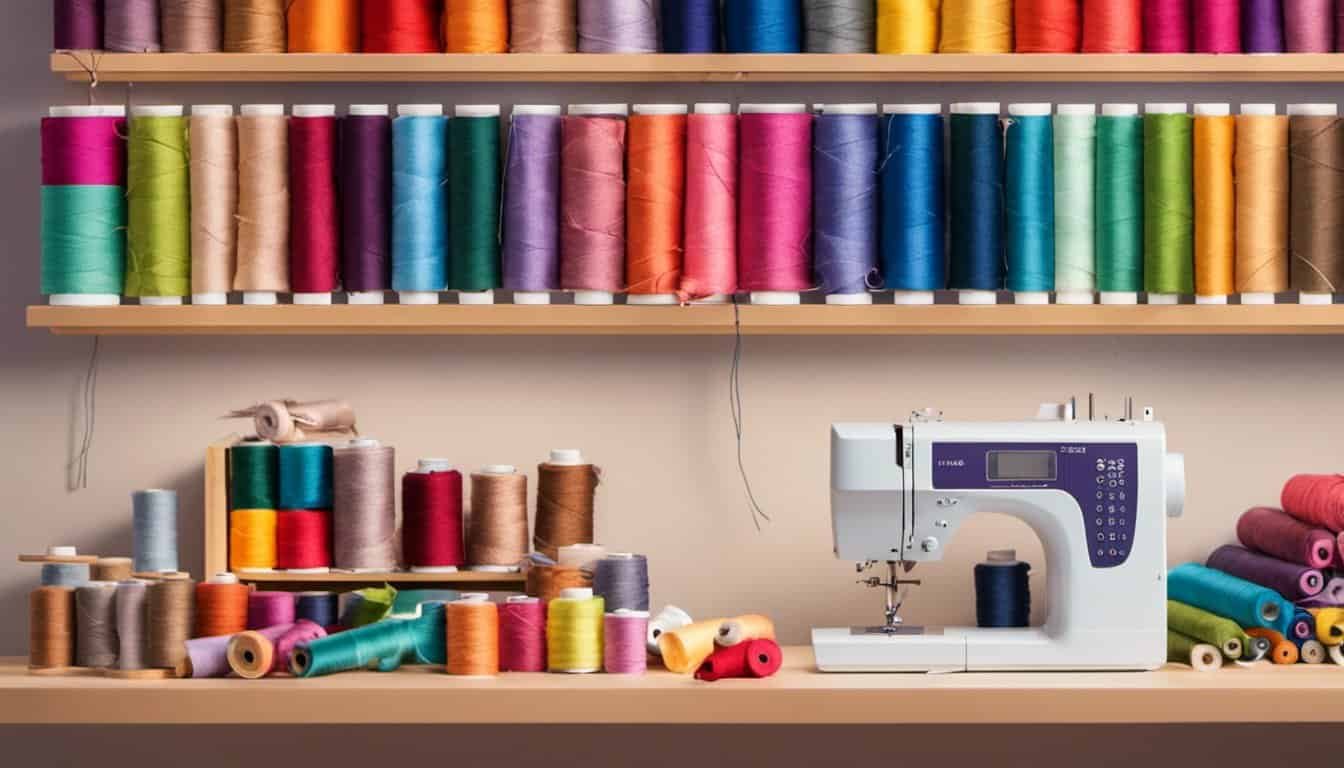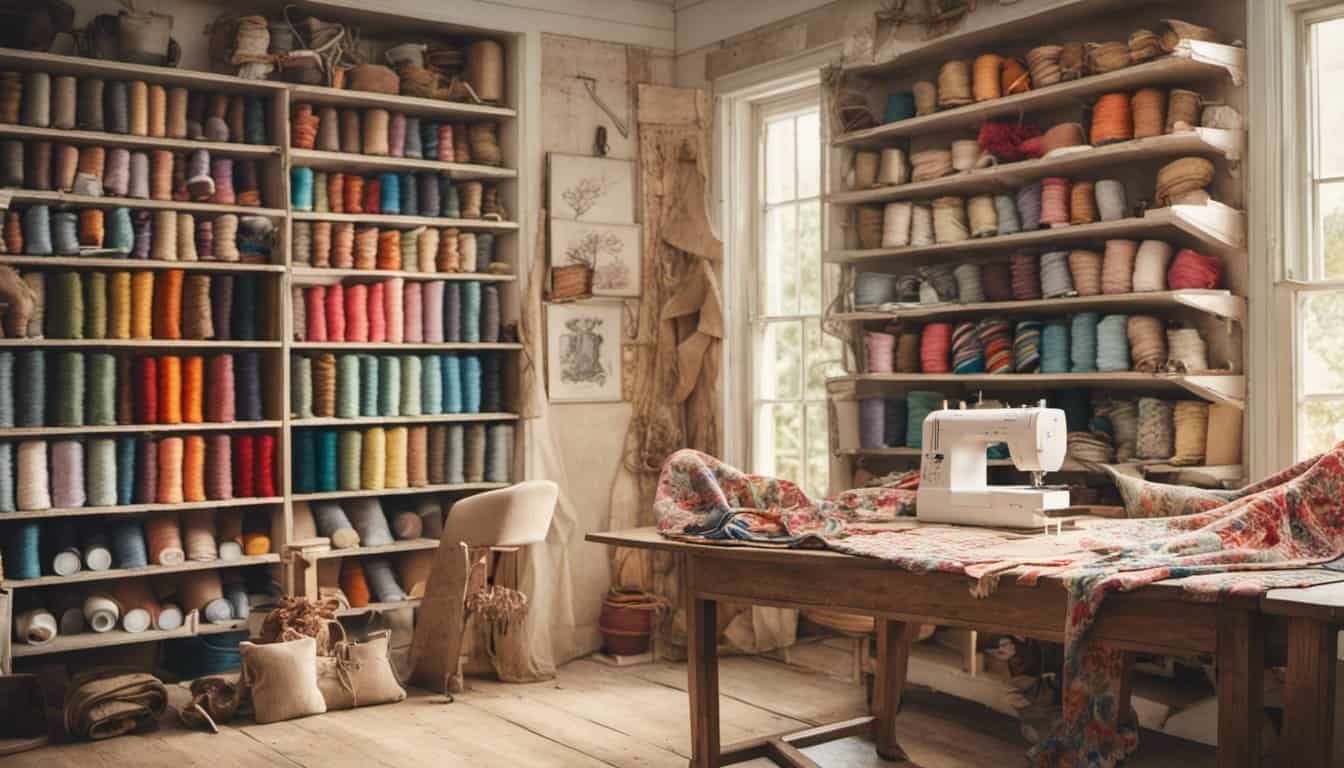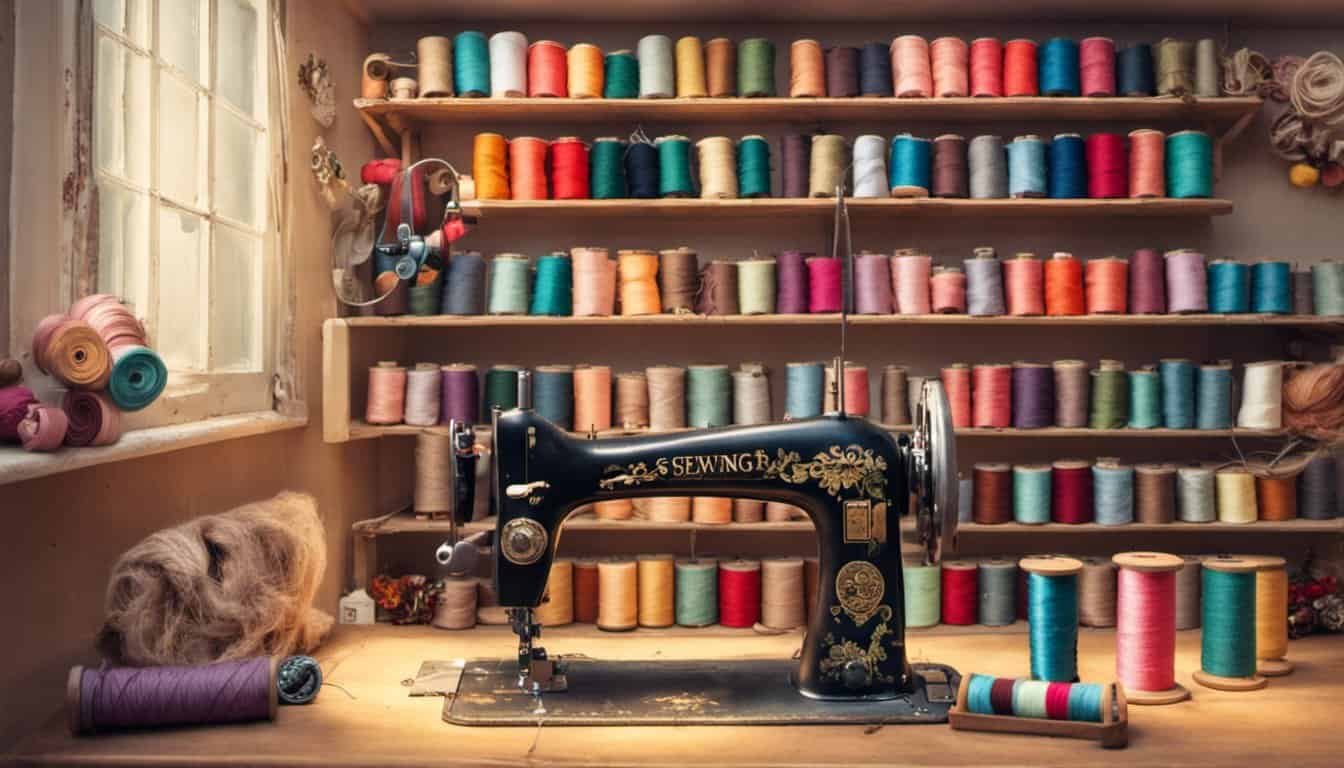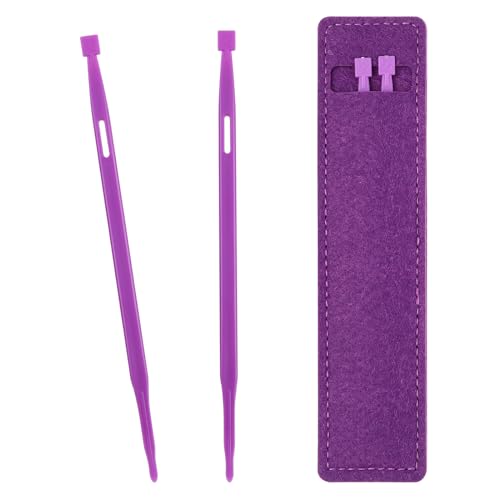Are you ready to embark on a new creative journey? If you’ve ever thought about learning how to sew, you’re in for a treat! Sewing is not only a practical skill, but it’s also a fantastic way to express your creativity and make unique, personalized items. In this article, we’ll explore the best way to start sewing, whether you’re a complete beginner or looking to brush up on your skills. Get ready to dive into the world of sewing and discover a new passion!
Are you tired of spending a fortune on clothes that don’t quite fit right or lack that personal touch? Learning how to sew can be the perfect solution! By mastering the art of sewing, you’ll be able to create garments that fit you like a glove and reflect your personal style. In this article, we’ll guide you through the best way to start sewing, from choosing the right sewing machine to learning essential techniques. Get ready to unleash your inner fashion designer and take control of your wardrobe!
Why Start Sewing?
So, you’ve been thinking about diving into the world of sewing, but you’re not quite sure if it’s the right hobby for you. Well, let me tell you, learning how to sew can be one of the most rewarding and enjoyable experiences you’ll ever have. Not only does it give you the opportunity to create personalized garments that fit you like a dream, but it also allows you to unleash your creativity and bring your ideas to life.
Here are a few reasons why you should seriously consider picking up a needle and thread:
1. Endless Creativity: Sewing opens up a whole new world of possibilities. You can make unique clothing pieces that reflect your personal style, or create one-of-a-kind gifts for your loved ones. The ability to choose your own fabrics, colors, and patterns gives you the freedom to express yourself in ways you never thought possible.
2. Perfect Fit: Have you ever struggled to find clothes that fit you just right? Learning how to sew allows you to customize garments to your exact measurements, ensuring a flawless fit every time. No more settling for pieces that are too loose, too tight, or simply not flattering. Sewing empowers you to create garments that make you look and feel amazing.
3. Cost Savings: Sewing your own clothes can actually save you money in the long run. While it’s true that quality fabrics can be pricey, the overall cost of making a garment from scratch is often lower than buying a similar item from a store. Plus, you have the added benefit of being able to create garments that are unique and of higher quality than what you typically find in mass-produced clothing.
4. Therapeutic and Mindful: Sewing can be incredibly therapeutic. It allows you to focus on the present moment, escaping the stresses of daily life. The rhythmic motion of the needle and thread can be soothing and calming, providing a sense of mindfulness and relaxation. It’s a wonderful way to practice self-care and unwind after a long day.
Gathering the Essential Tools and Materials
When it comes to starting your sewing journey, having the right tools and materials is essential. Here’s a list of the must-haves to get you started:
1. Sewing Machine
Investing in a good sewing machine is crucial for a smooth sewing experience. Look for a machine that suits your needs, whether you’re a beginner or more advanced. Consider factors such as the type of projects you’ll be working on, the stitch options available, and the machine’s durability. Don’t forget to read reviews and compare different models before making your choice.
2. Basic Sewing Kit
Every sewist needs a basic sewing kit. This should include:
- Scissors: Invest in a good pair of fabric scissors to make clean cuts.
- Pins: These are essential for holding fabric together while sewing.
- Needles: Different types and sizes of hand-sewing needles for various tasks.
- Thread: Start with a few basic colors of all-purpose thread.
- Measuring Tape: This will help you take accurate measurements.
- Seam Ripper: Don’t worry, everyone makes mistakes! A seam ripper will help you undo stitches.
3. Fabric
Choose fabric that suits your project. Beginners can start with easy-to-sew fabrics like cotton or linen. Take note of the fabric content, as different fabrics require different sewing techniques and machine settings. Consider factors such as color, pattern, and texture to bring your vision to life.
4. Patterns and Books
Patterns and instructional books are great resources for sewing enthusiasts. They provide step-by-step instructions and inspiration for a wide range of projects. Whether you want to sew garments or home decor items, having access to patterns and books will expand your sewing repertoire.
5. Notions
Notions are the little extras that make sewing easier and more efficient. Some essential notions include:

- Seam gauge: Used for measuring seam allowances.
- Tailor’s chalk: Helps you mark fabric accurately.
- Bobbin thread: This is the thread that goes on your bobbin.
- Pin cushion: Keep your pins organized and within reach.
- Iron and ironing board: Pressing your seams is vital for professional-looking results.
By gathering these essential tools and materials, you’ll be well-equipped to start your sewing journey with confidence. Remember, practice makes perfect, so don’t be afraid to
Understanding Sewing Machine Basics
When starting your sewing journey, understanding the basics of a sewing machine is crucial. The sewing machine is your trusty companion that brings your creative ideas to life. Here are a few key points to help you get familiar with the essential components of a sewing machine:
1. Threading the Machine:
Threading your sewing machine may seem daunting at first, but don’t worry, it’s easier than it looks. Follow the threading guide provided in your sewing machine manual, ensuring that the thread passes through all the necessary points. Remember, proper threading is essential for smooth stitching.
2. Bobbin Winding:
« Discover the Ultimate Sewing Hack to Achieve Picture-Perfect Finishes: Unveiling the Secrets of Sewing Facing
Discover the Ultimate Sewing Foot for Perfect Piping: Sewing Enthusiasts are Going Crazy Over This Game-Changing Accessory »
The bobbin holds the thread that forms the underside of your stitches. To wind a bobbin, place an empty bobbin on the bobbin winder spindle, follow the manual’s instructions to guide the thread, and engage the bobbin winding mechanism. Make sure to trim the thread end after winding to avoid tangles.
3. Stitch Selection:
Modern sewing machines offer a wide range of stitch options, from basic straight stitches to intricate decorative stitches. Familiarize yourself with the different stitch styles available on your machine. Experiment with the stitches to discover their unique characteristics and find the ones that complement your projects.
4. Adjusting Tension:
Proper tension ensures balanced stitches. Most sewing machines have a tension dial that you can adjust based on the type of fabric you’re using. A general rule of thumb is that the upper thread tension should match the bobbin thread tension.

5. Presser Feet:
Presser feet are attachments that hold your fabric in place while sewing. Different presser feet are designed for various purposes, such as zippers, buttonholes, and quilting. Learn how to attach and change presser feet on your machine to expand your sewing capabilities.
Choosing Your First Sewing Project
Now that you have a basic understanding of your sewing machine and essential sewing techniques, it’s time to choose your first sewing project. This is an exciting step that allows you to put your newly acquired skills to use and create something practical or beautiful. Here are a few tips to help you choose the perfect project:
1. Start Small: As a beginner, it’s best to start with small, simple projects that won’t overwhelm you. This could be a basic pillowcase, a tote bag, or a simple skirt. Starting small will help you build confidence and ensure a successful outcome.
2. Consider Your Interest: Choose a project that aligns with your interests and style. Do you love home decor? Then try making some decorative throw pillows or curtains. Are you a fashion enthusiast? Maybe start with a basic dress or top. By selecting projects that you are passionate about, you’ll stay motivated throughout the process.

3. Take It One Step at a Time: Break down your project into smaller, manageable steps. This will make it easier to follow along and complete your project without feeling overwhelmed. Read through the instructions carefully and make sure you understand each step before moving on to the next one.
4. Explore Online Resources: The internet is a treasure trove of sewing inspiration and resources. Look for online tutorials, video demonstrations, and sewing communities where you can ask questions and share your progress. These resources will provide guidance and support, making your sewing journey even more enjoyable.
5. Don’t Be Afraid to Experiment: Remember, sewing is all about creativity and self-expression. Don’t be afraid to add your unique touch to a pattern or explore different fabric choices. You might discover new techniques or create something even more amazing than you initially planned.
Learning Essential Sewing Techniques
Now that you have familiarized yourself with the basics of your sewing machine and gathered all the essential tools and materials, it’s time to dive into learning some essential sewing techniques. These techniques will serve as a foundation for your sewing journey and enable you to tackle a wide range of sewing projects. So, let’s get started!
1. Understanding Seam Allowance: Seam allowance refers to the space between the stitching line and the raw edge of the fabric. It’s important to know how much seam allowance your pattern requires and to stitch accurately within that allowance to ensure a neat and professional finish.

2. Learning Different Stitch Types: Sewing offers a variety of stitch options to choose from, including straight stitch, zigzag stitch, and decorative stitches. Each stitch has its own purpose and application, so take the time to experiment and practice with different stitch types to expand your sewing repertoire.
3. Mastering Hemming Techniques: Hems give your garments a polished look and prevent the fabric from fraying. There are several hemming techniques to master, such as blind hem, rolled hem, and hand-sewn hem. Practice these techniques to achieve clean and professional-looking hems on your projects.
4. Exploring Seam Finishes: Seam finishes are used to secure the raw edges of the fabric and prevent them from unraveling. Common seam finishes include zigzag stitching, overlocking, and french seams. Experiment with different seam finishes to find the ones that work best for your fabric and project.
5. Getting Comfortable with Gathering: Gathering is a technique used to create controlled fullness in a garment, such as in sleeves or skirts. It adds beautiful detail and shape to your creations. Learn how to gather fabric using gathering stitches or a gathering foot for more precise results.
6. Understanding Dart Placement: Darts are folds in the fabric that create shape and contour in garments. They are commonly used to shape the bust, waist, and hips. It’s important to understand the correct placement of darts and how to sew them accurately for a flattering fit.

Remember, practice makes perfect when it comes to learning sewing techniques. Start with small, simple projects that allow you to practice these techniques and gradually build your skills. Don’t be afraid to make mistakes or to try new techniques. Sewing is a creative and rewarding craft that offers endless possibilities for self-expression and personal style. So, grab your fabric, thread, and sewing machine, and
Troubleshooting Common Sewing Problems
Sewing can be a wonderfully creative and rewarding hobby, but sometimes it comes with its fair share of challenges. Don’t worry, though! With a bit of troubleshooting, you’ll be able to overcome any obstacles that come your way. Here are a few common sewing problems and how to solve them:
1. Skipped Stitches
If you find that your sewing machine is skipping stitches, first check your needle. A worn-out or bent needle can often be the culprit. Replace it with a new one and make sure it’s the correct size for your fabric. Additionally, check your machine’s tension settings. Adjusting the tension can help avoid skipped stitches.
2. Thread Tension Issues
Uneven or loose stitches can indicate a problem with your thread tension. Start by re-threading your machine, making sure the thread is correctly seated in the tension discs. You can also try adjusting the tension dial and experimenting with different settings until you achieve a balanced stitch.
3. Breaking Needles
If your needles keep breaking, there may be a few reasons to consider. Firstly, check that your needle is inserted correctly and securely. Using a needle that’s too small or too big for the fabric can also cause breakage. Lastly, be mindful of sewing over thick or bulky seams, as this can put stress on the needle.

4. Jammed Bobbin
When your bobbin gets jammed, it can be frustrating. Start by removing the bobbin case and cleaning out any lint or debris. Check that the bobbin is inserted correctly and that the thread is properly threaded through the tension spring. You may also want to check if your bobbin is wound evenly and is not too tightly or loosely wound.
5. Uneven Feed Dog
If your fabric isn’t feeding evenly, it may be due to an issue with the feed dogs. Start by cleaning out any debris that may be interfering with their movement. Additionally, check that the feed dog height is set correctly and make sure they’re engaging properly with the fabric.
Conclusion
Now that you have learned about the benefits of sewing and how to get started, you are ready to embark on your sewing journey. Sewing offers a world of creativity and self-expression, allowing you to create garments that are personalized to your style and fit perfectly. By gathering the essential tools and materials, understanding your sewing machine, and learning basic sewing techniques, you will be well-equipped to tackle your first sewing project.
Remember to start small and choose projects that align with your interests and style. Break down the project into manageable steps and utilize online resources to stay motivated and learn new techniques. Don’t be afraid to experiment and add your unique touch to your creations.
As you practice and build your skills, you will become more comfortable with essential sewing techniques such as seam allowance, stitch types, hemming, seam finishes, gathering, and dart placement. And if you encounter any common sewing problems along the way, you now have the knowledge to troubleshoot and overcome them.

So, grab your sewing machine, gather your supplies, and let your creativity flow. Sewing is a rewarding and fulfilling craft that will bring you joy and a sense of accomplishment. Happy sewing!

















